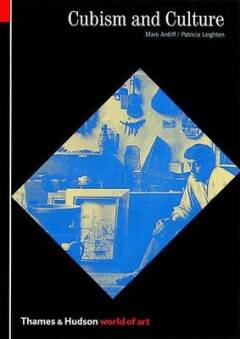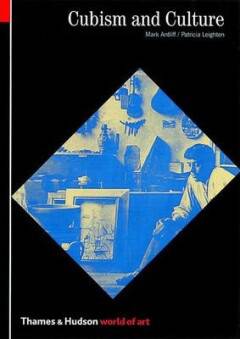
- Afhalen na 1 uur in een winkel met voorraad
- Gratis thuislevering in België vanaf € 30
- Ruim aanbod met 7 miljoen producten
- Afhalen na 1 uur in een winkel met voorraad
- Gratis thuislevering in België vanaf € 30
- Ruim aanbod met 7 miljoen producten
Zoeken
€ 13,95
+ 27 punten
Omschrijving
Often considered to be the seminal art movement of the twentieth century, Cubism initiated a pictorial revolution through its radical approach to image making, invention of the new media of collage and sculptural assemblage, and evolution toward pure abstraction. Scholarly yet accessible, Cubism and Culture reveals these profound formal innovations as integrally related to changes in French society. The authors first examine the movement's origins in primitivism and its engagement with issues of race and colonialism, and then consider the Cubists' responses to anti-Enlightenment philosophies, the relation of Cubist art to the "classical," the role played by gender conceptually and within particular careers and practices, collage and its interplay with cultural themes, and the impact of anarchism, nationalism, and pacifism on Cubism's cultural politics. This comprehensive and fresh examination of Cubism in its wider context--social, cultural, political, scientific, and philosophical--covers the full range of art and artists from the movement's advent in 1908.
Among the artists included: Alexander Archipenko, Maria Blanchard, Georges Braque, Robert Delaunay, Sonia Delaunay, André Derain, Marcel Duchamp, Raymond Duchamp-Villon, Albert Gleizes, Juan Gris, Alice Halicka, Roger de La Fresnaye, Marie Laurencin, Henri Laurens, Henri Le Fauconnier, Fernand Léger, Jacques Lipchitz, Louis Marcoussis, Frans Masereel, Jean Metzinger, Francis Picabia, Pablo Picasso.
Among the artists included: Alexander Archipenko, Maria Blanchard, Georges Braque, Robert Delaunay, Sonia Delaunay, André Derain, Marcel Duchamp, Raymond Duchamp-Villon, Albert Gleizes, Juan Gris, Alice Halicka, Roger de La Fresnaye, Marie Laurencin, Henri Laurens, Henri Le Fauconnier, Fernand Léger, Jacques Lipchitz, Louis Marcoussis, Frans Masereel, Jean Metzinger, Francis Picabia, Pablo Picasso.
Specificaties
Betrokkenen
- Auteur(s):
- Uitgeverij:
Inhoud
- Aantal bladzijden:
- 224
- Taal:
- Engels
- Reeks:
Eigenschappen
- Productcode (EAN):
- 9780500203422
- Verschijningsdatum:
- 17/11/2001
- Uitvoering:
- Paperback
- Formaat:
- Trade paperback (VS)
- Afmetingen:
- 152 mm x 210 mm
- Gewicht:
- 444 g

Alleen bij Standaard Boekhandel
+ 27 punten op je klantenkaart van Standaard Boekhandel
Beoordelingen
We publiceren alleen reviews die voldoen aan de voorwaarden voor reviews. Bekijk onze voorwaarden voor reviews.











